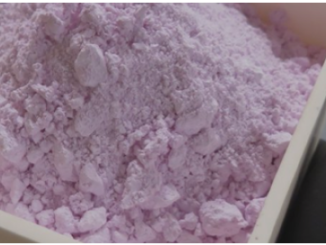The positive trend for the rare earths industry has continued into mid-2017 with rising Chinese domestic prices, according to Roskill Information Services, for many rare earth products and increasing output from non-Chinese producers Lynas and India Rare Earths. Roskill’s revised automotive forecast predicts robust growth in the electric vehicle (EV) market over the next decade suggesting greater potential demand growth for neodymium-iron-boron (NdFeB) magnets. These developments are welcomed by both existing and potential rare earth producers, which have previously suffered from a long period of falling prices and quiet demand from traditional end uses.
In early 2017, the largest Chinese producer, China Northern Rare Earth announced several price increases for rare earth products, not only for magnet materials neodymium oxide, praseodymium oxide and didymium alloys, but also for cerium and lanthanum oxides. China FOB prices for lanthanum and cerium oxide prices increased by 4.1 percent and 4.3 percent respectively in the first four months of 2017. In other Chinese news, the Baotou municipal government has introduced a material tracking system to try and tackle the problem of illegal production. Consumers in the rest of the world will be watched closely to see its level of success.
Meanwhile, Lynas reported record production of both total rare earth products and Nd-Pr oxide in Q1 2017 from its LAMP facility in Malaysia. Sales revenues also reached a new high. It is hoped that sustained above-capacity output and increasing revenue from sales will give a significant boost to rare earth projects currently in development. Potential projects are now focusing on the future of magnet materials to maintain their bottom line.
Magnet growth depends on the uptake of NdFeB magnet technologies in EVs and wind turbines. The global EV penetration rate is around 3.5 percent in 2016 but Roskill forecasts that, with even a relatively conservative outlook, we could see this rate increase tenfold or more by 2030. Coupled with increasing rates of vehicle ownership worldwide, this underlines considerable potential for growth in NdFeB magnet demand.
Questions remain however, on the ability of rare earths supply to be able to meet increasing neodymium demand. The rare earths industry is complex with 15 commercially produced elements (including yttrium) and an intricate web of supply-demand dynamics. Neodymium cannot be produced alone and any potential project looking to supply neodymium, also needs to find markets for the other rare earth co-products, for many of which demand is falling. Taking into consideration the high cost and technical expertise required to bring a rare earth separation plant into production, there could be strong limitations on the amount of rare earths supply entering the market over the next decade.
Outside of magnets, traditional markets for rare earths have declined. The expected surge in EVs will take market share from the hybrid electric vehicle market, which is the mainstay for nickel-metal-hydride growth. The phosphors market in light bulbs, for the heavy rare earths europium and terbium, continues to fall rapidly as fluorescent bulbs give way to LEDs. Growth in the major market of catalysts is expected to slow as OPEC reduces oil production though 2017 and as the US continues to increase its production of lighter tight oil.
Roskill Information Services has published 16 editions of its multi-client report on the global rare earths industry over the last 40 years. The 17th edition, Rare Earths: Global Industry, Markets and Outlook to 2027 will be published in late 2017.



